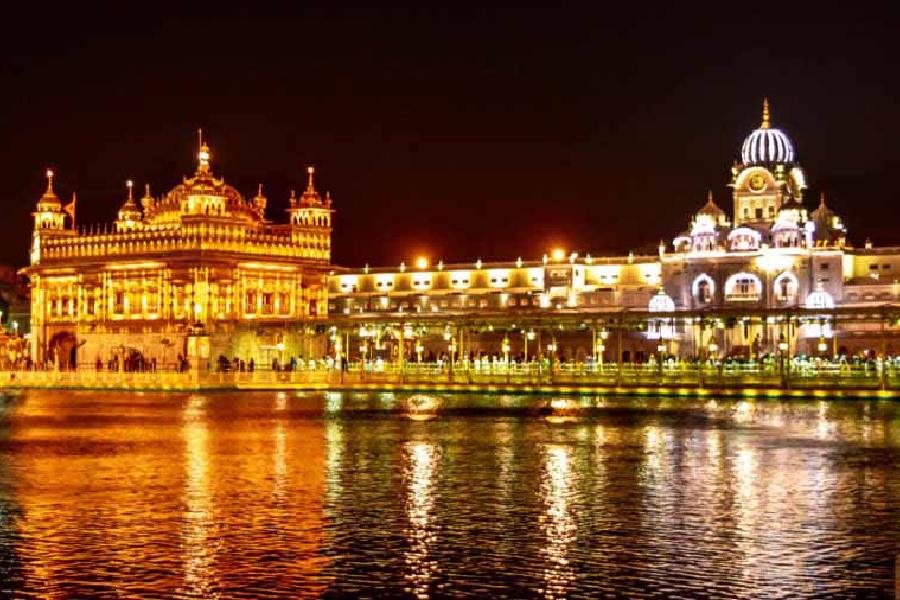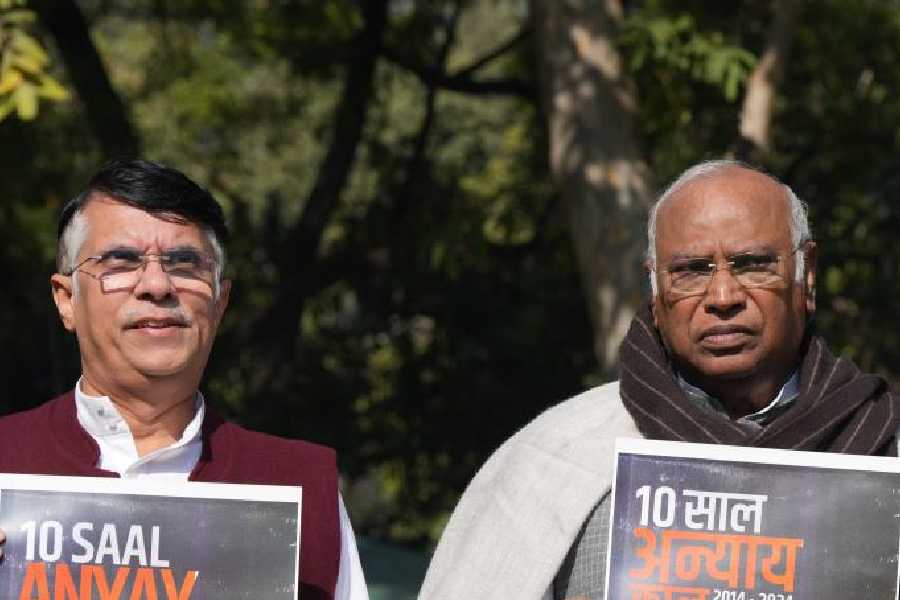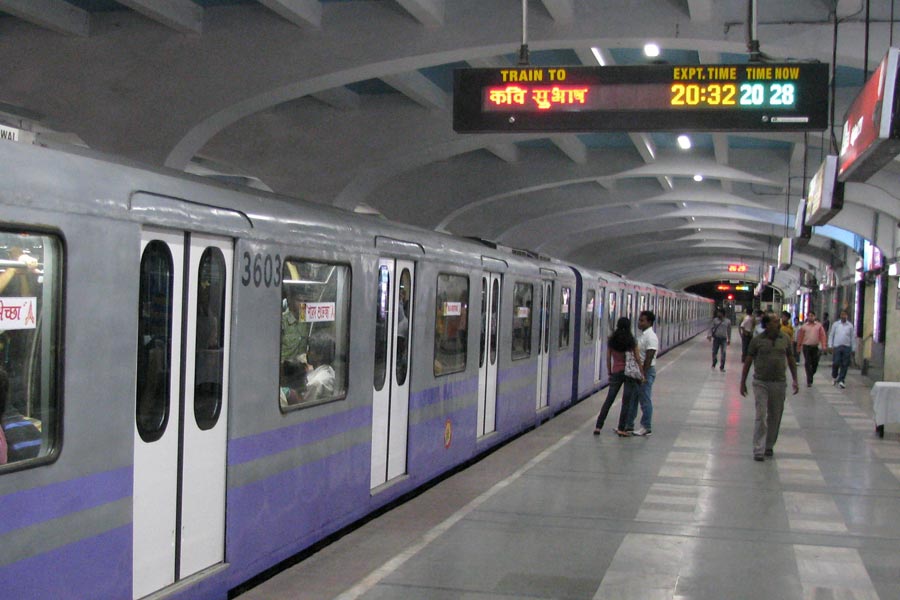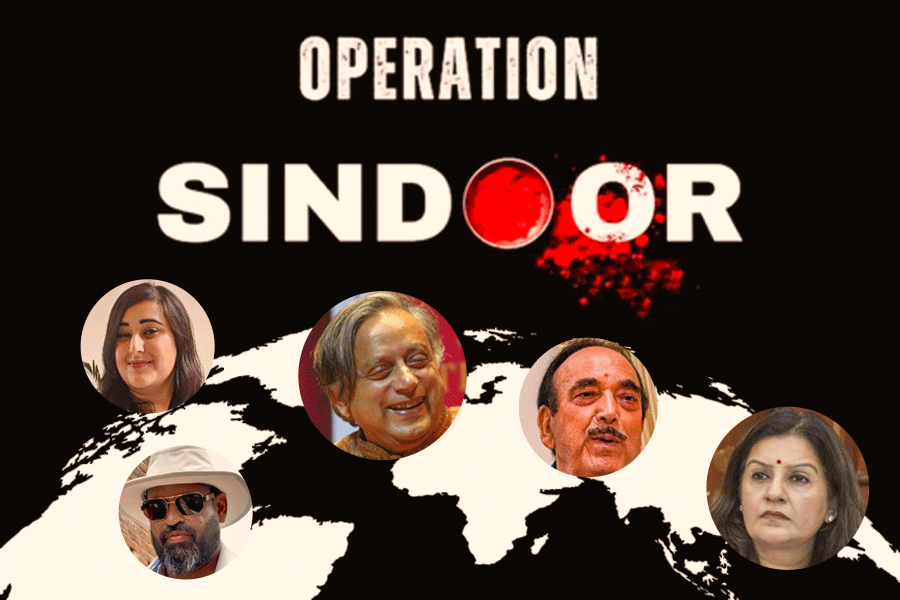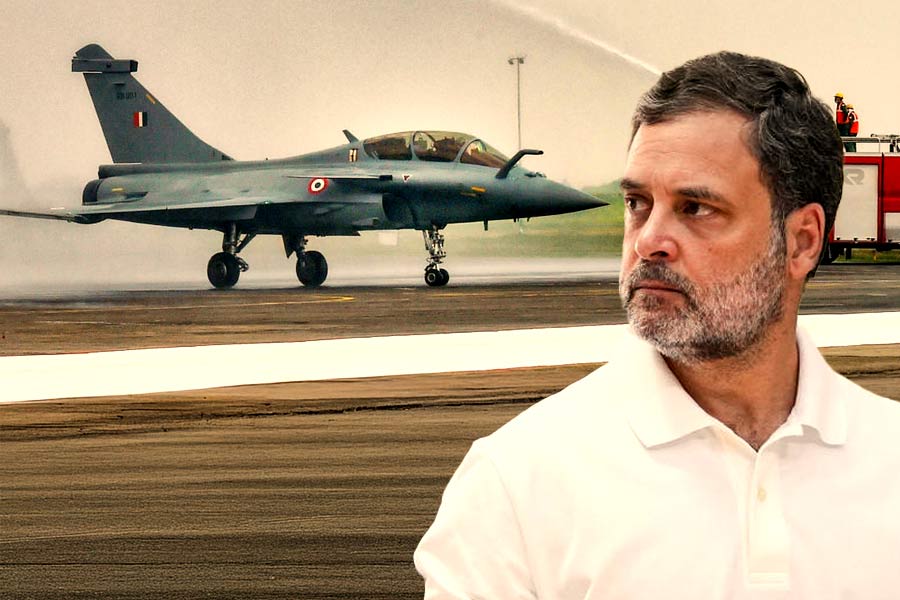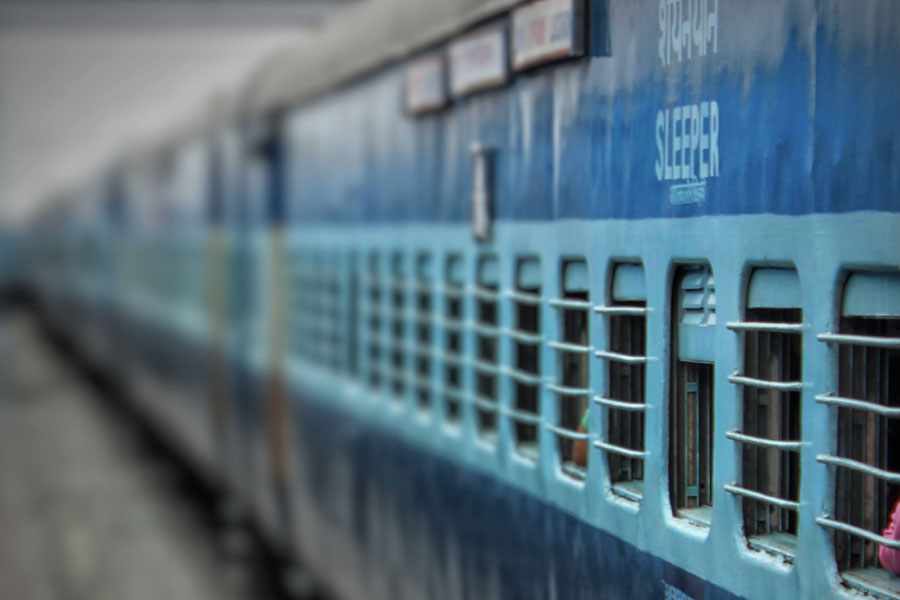
About 70 years ago, I was born somewhere in Kestopur, Baguiati, Hatiara or Teghora — in a village surrounding today’s Salt Lake. That is why I have forged an intimate acquaintance with the entire area. In those days, our only link with Calcutta was the Barasat-Basirhat narrow gauze light railway line. It was the initiative of Sir Biren Mookerjee and his Martin Burn Company. As a child, when I took the coal-fired, steam-operated train from Belgachhia with my father, there would be miles and miles of water to the right as we approached Patipukur station. Dotting the waters far away amid clusters of reeds were kerosene lamp lights in huts under thatched roofs supported by bamboo poles. Carcasses of animals floated in the water as did sometimes a human body or two, creating terror in a child’s mind.
In 1900, there had been a terrible flood. The salt lakes and the nearby villages, including Dum Dum and Baguiati, got swamped by the waters of the Bidyadhari and the sea. The British got worried. To save the city of Calcutta, they commissioned the digging of the Kestopur canal over 25 miles, from Bagbazar to Kulti lock gate, i.e. the mouth of the Bay of Bengal. The work started from 1902 and ended in 1907.

The water of the Ganga flowed along the canal, ebbing and flowing with the tide in the sea. Boats and launches plied here, as did steamers now and then. This was the gateway to Calcutta from Assam and east Pakistan. Trade flourished as big boatloads of wood and other ware got transported along the water. In our childhood, we used to see eight to 10 men dragging a boat full of hay and paddy by a rope as the flow dipped during low tide. By then, the canal’s water level had started reducing.
Today’s thin Kestopur canal, flowing by the garbage and encroacher-infested Nayapatty, brooks no comparison to the wide, swelling body of water in those days that lashed through the Kulti gate from the Bay of Bengal. It is along this canal that Dr Bidhan Chandra Roy had brought the American ambassador Ellsworth Bunker on a launch to meet the well-known freedom-fighter Laxmikanta Pramanik in Mahishbathan village. He was the local zamindar and was the president for 23 years at a stretch of the union board comprising 16 villages.
Mahishbathan’s Gandhi

The Pramaniks are the original residents of the locality. It was this family which started building resistance to the British in the area. Laxmikanta Pramanik, the second son of Gourhari Pramanik, known as Mejobabu, was the catalyst in the movement. He joined the Congress in 1921 and got arrested in 1924. His arrest and torture created public outrage against the British among the locals.
Even earlier, in the first decade of the nineteenth century, when the British were digging the Kestopur canal they ran into resistance from the Pramaniks when they tried to dig through Krishnapur Road. The road, which connected Mahishbathan village to Jessore Road and the city, was the property of the Pramanik family. A fight started and the conflict reached the court. The British lost the case. A compromise was reached — that the British government would provide for a big boat for people to cross the dug-up canal and another boat for ferrying vehicles. No fare was to be charged for this.
When Mahatma Gandhi started his non-cooperation movement, and the entire nation was up in arms, the little-known area of Mahishbathan Kestopur embraced the movement with great gusto.
Protest and prosecution
It was an April Sunday in 1930. People from the villages on the banks of Kestopur Canal like Mahisbathan, Mahishgot, Tarulia, Krishnapur, Jagatpur, Chandiberia, Ghuni, Jatragachhi, Baligori, Jotbhim, Pachuria, Dharmatala and Neriboli started boiling salt water. Cries of Vande Mataram rent the air of Kestopur-Mahishbathan. At the forefront of this Swadeshi movement here was Gourhari Biswas of the Patharghata zamindar family, who was colloquially called Swadeshibabu. He was in direct contact with the satyagrahis of Midnapore, like Ajay Mukhopadhyay and Satish Samanta. Laxmikanta Pramanik joined hands with them. Daughters and wives of every home started boiling sea water to get salt under the tree shade in the nearest Charak Mela ground. After a meal of soaked rice, the menfolk would go out with iron strainers to sieve the salty clay on the bank of the Bidyadhari sparkling white with dried salt on the clay. After straining the salt out, the satyagrahis would carry the salt to sell in Burrabazar, Bagbazar, Shyambazar and Sovabazar.
The news of the salt agitation in Mahisbathan spread far and wide. Prafulla Sen came from Arambagh, Nandalal Bose and Prabhat Mohan Bandyopadhyay from Santiniketan, Jatish and Ksitish Dasgupta from Sodepur... Jadabendra Panja led a group of 25 satyagrahis to Mahishbathan.

The non-violent agitators courted arrest in batches. They lay prostate around the collected salt. Women protected their produce by covering the mounds with their anchal. The rulers went berserk, dragging the women away by the hair and ordering indiscriminate lathicharge on the satyagrahis. With cries of Vande Mataram on their lips, Laxmikanta Pramanik and Raichand Dugar were among those arrested. The British started torturing the prisoners. They were probably the first satyagrahis of Bengal. Their arrest and torture were said to be the first to be recorded in the state. The jails became full. Dum Dum Jail, Alipore Jail, Barasat Jail — it was the same everywhere. A week after Laxmikanta Pramanik’s arrest, Deshapriya Jatindranath Sengupta came here with wife Nellie Sengupta. Well-known writer Anurupa Devi came. She started making salt herself.
Several such leaders and intellectuals visited Mahisbathan during the satyagraha agitation. Even Netaji Subhas Chandra Bose is said to have hoodwinked the police and visited the area under cover. Acharya Prafulla Chandra Ray often came to meet the satyagrahis from his Bengal Chemical factory in Beleghata early in the mornings, walking along the ledges of the bheris in his quick-footed gait, hair unkempt and his khadi loin cloth draped till knee length.
Khadi started getting spun across the village following an appeal by the Congress. Four spinning wheels were set up on the verandah of the zamindar house. Training was given here.
An elaborate description of the salt agitation has been given by my childhood teacher Nisikanta Bagui in his book Kolkatar Purbasimanta. He has used information from Labanhrader Upakatha, penned by Bhupesh Pramanik of the Pramanik family. Alongside these books, I have also heard about the agitation from my father, social worker Rajendralal Chattopadhyay. He used to stay in Gouribari of Ultadanga. He actively took part in satyagraha agitation with his friend Jugalkishore Basak, a freedom-fighter. I used to hear of the tortures the British inflicted from him in my childhood.
A friend of mine, Bimalendu Chakraborty, in his book Dum Dum Rajarhater Itihash has written: “The 1930 salt agitation has to be regarded as a significant event. The second son of the Mahishbathan Pramanik family, Laxmikanta Pramanik, used to be called by two names by the locals — Mejobabu and Gandhi of Mahishbathan. The leaders to the common participants of the salt agitation were all farmers and fishermen. Their urge for liberation, their non-violent way of conducting the salt agitation and the police atrocities on them make for a sensational chapter in local history.
“One hears of a resident called Krishnapada Banerjee. He was Mejobabu’s right-hand man. In the 70s, audio recordings were made of his interviews by historian Hiteshranjan Sanyal. Gandhi Sangrahashala has those three audio tapes in its archives. Sanyal wrote an article based on the interviews in the magazine Parichay...”
Was it only the salt agitation? The boycott of imported goods started simultaneously. An able carpenter of the village Becharam Mondal made spinning wheels by the hundreds. Everyone pledged to burn imported goods. The whirr of the spinning wheel could be heard in every house. Boys went around on foot playing the harmonium and singing “Mayer dewa mota kapor mathay tule ne re bhai”. Rows of handlooms were set up in the courtyard of the Pramaniks.
The British rulers unleashed torture during the 1932 civil disobedience movement. Following Netaji’s call, Laxmibabu declared: “We do not recognise this government. We will not pay taxes.” In 1932, the Chowkidar Tax boycott agitation started. In his book Kolkatar Purbosimanta, Nishikanta Bagui writes of how police atrocities started round the clock. Doors and windows of almost all houses were unhinged. The house of “Mahishbathan’s Gandhi” Laxmikanta Pramanik was no exception. Livestock started getting confiscated from every family. Houses were rid of the menfolk and their own bullock carts were used to carry away their belongings. With their utensils looted, villagers had to eat on banana leaves.
Terrible torture and oppression were inflicted on the villagers of the eight to 10 villages in Mahishbathan and its surroundings. Yet there was no gunfire as the entire movement was non-violent. Bagui asks in his book: “To free the Motherland of her chains, there have been many an agitation in eastern India — both armed and non-violent — but has there been a second instance of an agitation as non-violent as the salt movement, foreign goods boycott movement and Chowkidar Tax boycott movement of Mahishbathan?”
Interested readers can take a rickshaw from the CRP camp or Nayapatty bazaar to go see the lalbari of Mahishbathan, the seat of possibly the first satyagraha agitation in Bengal. It would take one time to count the number of rooms there are in the mansion. If one listens keenly, one might hear fearless voices of protest against British tyranny.
Translated by Sudeshna Banerjee
Source for picture and map: Labanhrader Upakatha by Bhupesh Kumar Pramanik


